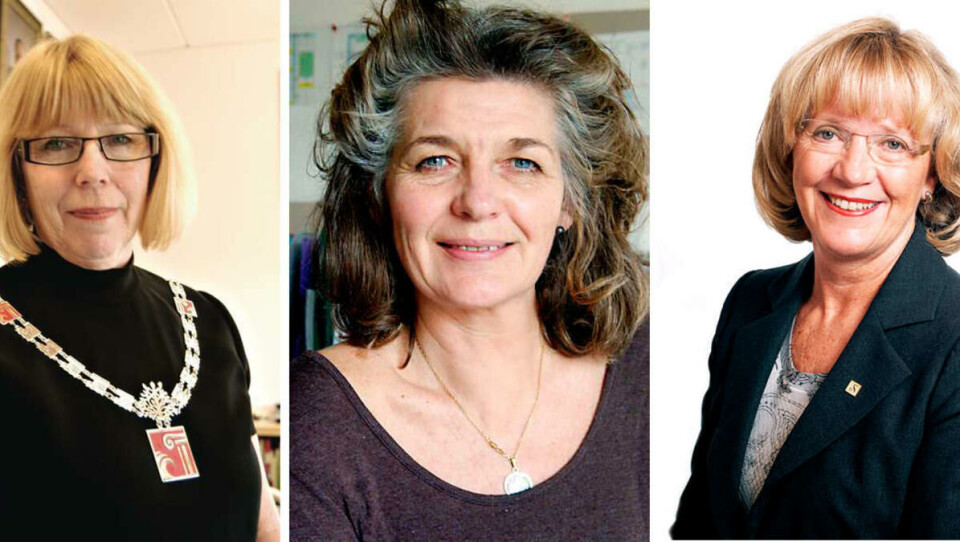
A rising number of female rectors
In Norway one in three university and university college rectors are women – an increase of 75 per cent in two years. All the same, we are having a hard time catching up with our Swedish neighbours, who, thanks to network building, are close to achieving full balance between the sexes.
The share of female rectors at Swedish universities and university colleges has quadrupled, from ten per cent in 2003 to 40 per cent in 2007. There has been a positive development for women in this country as well. The share of female rectors has increased by almost 75 per cent since 2005, and women are now in possession of one in three rectoral positions at the country’s universities and university colleges.
According to Rector Cecilie Broch Knutsen at the Oslo National Academy of the Arts (KHiO), there are many reasons why more women are becoming leaders today.
– Firstly, women have gradually been given the opportunity to take on leadership positions and build skills. Secondly, more women have taken higher education, and this means that more women will be recruited for leadership positions, she says.
At the seven Norwegian universities, there are five male and two female rectors. The eight scientific university colleges all have male rectors – except for the two academies of the arts, which both have female rectors – while we find 17 men and 9 women at the 26 state university colleges.
All the same, we are somewhat behind our Swedish neighbours, who are in the process of achieving full gender balance. Denmark comes out at the bottom, with only ten per cent of rectors being women.
– Gender equality has for many years been far down on the political agenda in Denmark. There is a belief that «equality comes on its own» as women get more educated, says Kamma Langberg, Senior Researcher at The Danish Centre for Studies in Research and Research Policy at the University of Århus.
Leadership network
Much of the credit for the development in Sweden is given to the leadership development programme IDAS, «Identification, Development, Advancement, Support», which has been developed by Ingegerd Palmér, Rector at Mälardalen University, and former leader of The Association of Swedish Higher Education. The goal behind the project was to make women more visible as leaders, and to contribute to developing the future academic leadership. In addition to this, one hoped to increase the proportion of women at all universities and university colleges, so that a 50/50 or 40/60 gender division was possible.
According to Monica Wennås, Local Project Manager and Leadership Developer at Linköping University, the success of the Swedish model is based on building female networks and at the same time raising competence.
– The network is supposed to be a meeting place where women from different subject fields have the opportunity to exchange experiences and plan their career in the company of others. This will improve their prerequisites for taking on different leadership tasks, and their knowledge of practical management will increase, she says.
In order to establish the network, two women under the age of forty were chosen from every institution of higher learning in Sweden.
– We chose this age group because they were the most likely to be in leadership positions when the project was completed, she says.
Need a push
In Norway we have not had a project corresponding to IDAS. Cecilie Broch Knudsen says that if the positive trend in Norway is to continue, women must learn to praise each other and learn from the experience of others.
– We would be wise to learn from the Swedish success. The fact that women are lagging behind men when it comes to leadership positions, is due to the fact that women are very self-critical and need a push before they are willing to take the step, she says.
Gerd Bjørhovde, leader of Women in Science (Kif), agrees with the Rector of KHiO. She thinks that more women are interested in careers in leadership, but that it is not right to leave the job of climbing the ladder to these women alone.
– In Norway we have not focused especially on recruiting women to leadership positions, but instead on increased gender balance in research. Joint «rector schools», with a view to prepare future rectors for the challenges they will meet in the position, have been arranged for both sexes. Now we at Kif also wish to focus specifically on women, and it might be a good idea to look at the Swedish solutions, she says.
In January of this year, the Ministry of Education and Research gave Kif the task of preparing goal-orientated and concrete suggestions of how to improve women’s opportunities of a career in research. In the 25 page report, which was sent to Minister of Research and Higher Education Tora Aasland , it is suggested that one should establish permanent scientific positions , post-doctoral positions and different kinds of qualification positions, earmarked for women.
Make their own choices
Rector Torunn Lauvdal at the University of Agder says that it is important that possibilities for women are made more visible, and that emphasis is put on recruiting more women to careers in leadership.
– The number of female administrative leaders and rectors at university colleges and universities has risen sharply during recent years. It is however important to remember that it is hard to secure positions for women when the selection process consists of an election. Quotas can for example not be used on the election day itself, just in the nomination process, she says.
At Agder they have still managed to acheive a 50/50 division at the leadership level.
– The reason why we have managed this is that the university itself elects vice-rectors and deans. They are not chosen through an election, as is the practice at other universities and university colleges, she says, and adds that they are of course very proud of their results.
In Sweden however one has not been committed to gender quotas, according to Monica Wennås. She thinks that gender quotas can lead to women being criticized for lacking academic discipline.
– Instead we have attempted to motivate and intensify the contact between women who have the competence to become future leaders, she says.
































